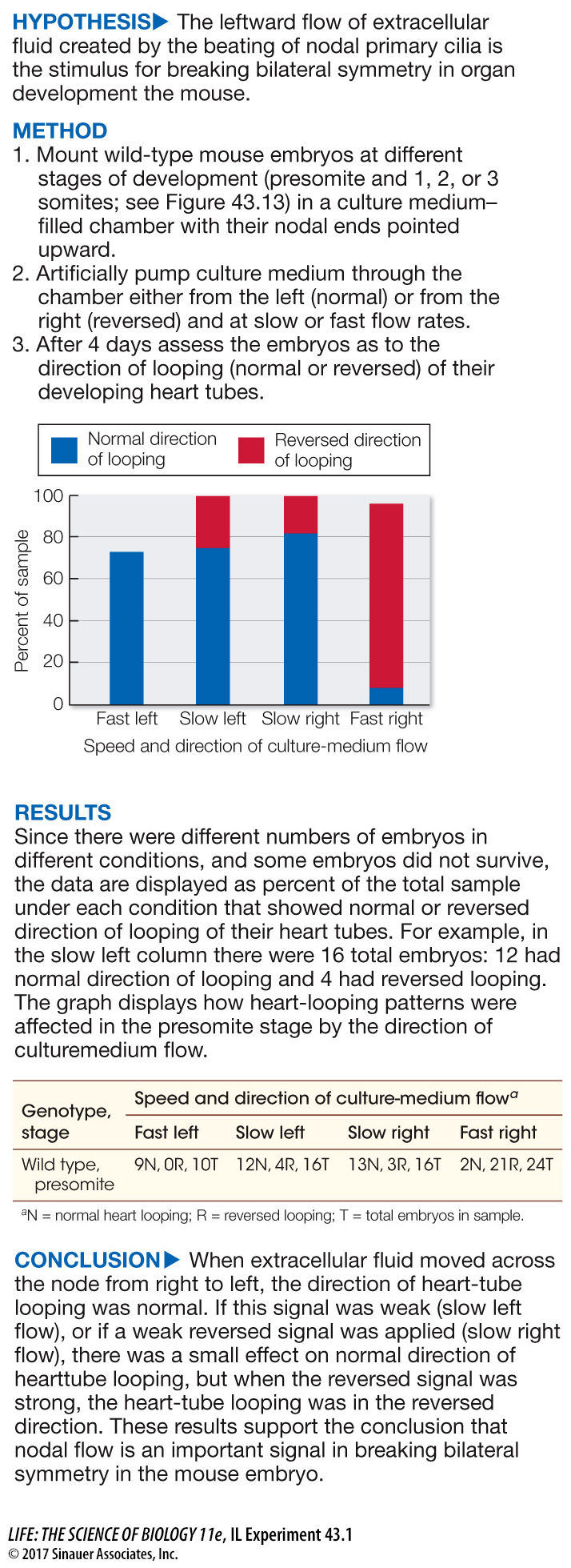How is bilateral symmetry broken?
Gastrulation results in the anterior–
investigating life
Does the Direction of Nodal Flow Influence the Development of Left–
experiment
Original Paper: Nonaka, S., H. Shiratori and H. Hamata. 2002. Determination of left–

work with the data
The experiment illustrated in the graph was done on presomite embryos—
| Genotype, stage | Results |
|---|---|
| Wild type, presomite | 2N, 21R, 24T |
| Wild type, 1- |
9N, 0R, 12T |
| Wild type, 2- |
22N, 0R, 22T |
| Wild type, 3- |
14N, 0R, 14T |
QUESTIONS
1.
Plot the data as the percent of responses on the y axis and developmental stage on the x axis.

2.
Why did this experiment not include left flow as a stimulus?
The experiment did not include left flow because we know left flow is the normal stimulus and that it is only disrupted by a fast right flow. This experiment was aimed at determining the sensitive period for the ability of that disruptive stimulus to alter the normal developmental pattern.
3.
Do these data provide evidence for a sensitive period for nodal flow determining left–
The data from embryos of different developmental stages support the conclusion that there is a sensitive phase of development where the left–right symmetry of the embryo is determined, and that it is between the presomite and 1-
4.
What do you conclude from the results on the 1-
The results on 1-
A similar work with the data exercise may be assigned in LaunchPad.